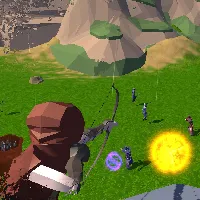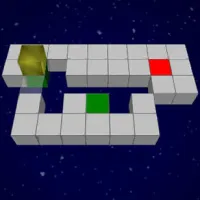STACK
SIMILAR GAMES
Description
Stack - GamePluto
About Stack - GamePluto
We are excited to present our comprehensive exploration of Stack, a pivotal concept within the framework offered by GamePluto. Our objective is to provide an in-depth understanding of how Stack functions, its critical role in various computational processes, and its significance in the broader landscape of game development and software engineering. We delve into the intricate details, aiming to illuminate the fundamental principles that underpin this essential data structure. Through detailed explanations and practical considerations, we will unravel the complexities, making the concept of Stack accessible and its importance evident.
Understanding the Core Principles of a Stack Data Structure
At its heart, a stack is a fundamental abstract data type that serves as a collection of elements, with a particularly strict rule governing how elements are added and removed. This rule is commonly referred to as Last-In, First-Out (LIFO). Imagine a physical stack of plates; the last plate you place on top is the first one you will remove. This intuitive analogy perfectly encapsulates the operational paradigm of a stack. The two primary operations associated with a stack are push, which involves adding an element to the top of the stack, and pop, which involves removing the element currently at the top. The element that is most recently added is always the first to be retrieved. This LIFO principle is not merely a theoretical construct; it has profound practical implications across numerous computing disciplines, influencing how algorithms are designed and how data is managed. The elegance of the stack lies in its simplicity and the directness with which it models certain types of problems.
Key Stack Operations Explained
To truly grasp the functionality of a stack, it is essential to understand its core operations. The push operation is the mechanism by which new data is introduced into the stack. When an element is pushed onto the stack, it is placed directly on top of the existing elements. This increases the size of the stack by one. Conversely, the pop operation is responsible for removing the topmost element from the stack. This operation not only removes the element but also returns it, allowing the calling program to process the retrieved data. Crucially, the pop operation can only be performed if the stack is not empty; attempting to pop from an empty stack typically results in an error or an undefined behavior, often termed an underflow. Beyond these fundamental operations, a stack often provides an additional function: peek or top. This operation allows us to view the element at the top of the stack without removing it. This is invaluable for inspecting the current state of the stack without altering it. Finally, a isEmpty operation is vital for determining whether the stack contains any elements, preventing underflow errors and ensuring robust program execution.
Real-World Applications of Stack Data Structures
The LIFO nature of a stack makes it an indispensable tool in a wide array of computational scenarios. Its applications extend far beyond theoretical computer science, impacting the software we use daily and the games we play. In the realm of programming, function call management is a quintessential example of stack usage. When a function is called, its local variables, parameters, and the return address are all pushed onto a region of memory known as the call stack. As functions complete their execution, their corresponding frames are popped off the call stack, allowing execution to return to the calling function. This process ensures that program control flow is maintained correctly.
Browser History and Undo/Redo Functionality
Web browsers extensively utilize the stack data structure to manage browsing history. Each time a user navigates to a new page, the URL is pushed onto a history stack. When the user clicks the "back" button, the most recent URL is popped from the stack, returning the user to the previous page. Similarly, the "forward" button often interacts with a separate stack to allow navigation through previously visited pages.
Another ubiquitous application is the undo/redo functionality found in most software applications. When a user performs an action (e.g., typing text, making a change), that action is recorded and pushed onto an undo stack. To undo an action, the last action is popped from the undo stack, and its inverse operation is performed. For redo capabilities, a separate redo stack is often employed, storing actions that have been undone. This intricate dance of pushing and popping ensures a seamless user experience, allowing for easy correction of mistakes.
Expression Evaluation and Parsing
The evaluation of mathematical and logical expressions, particularly those involving parentheses and operator precedence, heavily relies on stack structures. Converting infix expressions (like a + b c) to postfix (a b c +) or prefix notation often employs stacks to manage operators and operands. Furthermore, the evaluation of postfix expressions is a classic stack algorithm. When an operand is encountered, it is pushed onto the stack. When an operator is encountered, the required number of operands are popped from the stack, the operation is performed, and the result is pushed back onto the stack. This systematic approach ensures accurate calculation.
Memory Management and Recursion
Beyond the function call stack, stacks play a role in various memory management strategies. In compiler design, stacks are used for tasks such as managing activation records and parsing language syntax. Recursion, a powerful programming technique where a function calls itself, is inherently managed by the call stack. Each recursive call adds a new frame to the stack, and when the base case is reached, the frames are popped off in reverse order, unwinding the recursion. Without the underlying stack mechanism, recursive algorithms would be impossible to implement correctly.
Implementing Stacks with GamePluto's Framework
Within the innovative environment provided by GamePluto, the implementation and utilization of stack data structures can be approached with a focus on efficiency and robustness. While GamePluto might offer specific utilities or libraries, the foundational principles of stack implementation remain consistent. Developers can leverage these principles to create sophisticated game mechanics, manage complex game states, or optimize internal game logic. The adaptability of the stack ensures its relevance across a wide spectrum of game development challenges.
Choosing the Right Implementation Strategy
When considering how to implement a stack, two primary approaches are commonly adopted: using an array or using a linked list. Each approach offers distinct advantages and disadvantages in terms of performance characteristics and memory utilization.
- Array-based Stacks: An array provides a contiguous block of memory, which can lead to excellent cache performance. The implementation involves maintaining an index that points to the top of the stack. Pushing an element involves placing it at the next available index and incrementing the top index. Popping involves decrementing the top index and returning the element at that position. The primary limitation of an array-based stack is its fixed size. If the stack grows beyond the allocated size of the array, it can lead to an overflow condition, requiring dynamic resizing which can incur performance overhead.
- Linked List-based Stacks: A linked list consists of nodes, where each node contains data and a reference to the next node. For a stack, the head of the linked list typically represents the top of the stack. Pushing an element involves creating a new node and setting its 'next' pointer to the current head, then updating the head to point to the new node. Popping involves retrieving the data from the head node, and then updating the head to point to the next node in the list. The main advantage of a linked list-based stack is its dynamic size; it can grow or shrink as needed, avoiding the fixed-size limitations of arrays. However, it may incur slightly higher memory overhead due to the storage of pointers and potentially poorer cache locality compared to arrays.
The choice between an array and a linked list implementation often depends on the specific requirements of the application, such as expected maximum stack size, the frequency of push and pop operations, and memory constraints. For scenarios with a predictable and relatively small maximum size, an array-based stack can be highly efficient. For applications where the size is highly variable or potentially very large, a linked list-based stack offers greater flexibility.
Leveraging GamePluto's Potential for Stack-Centric Logic
Within the context of GamePluto, understanding the nuances of stack implementation allows developers to architect game systems that are both performant and scalable. For instance, in a complex strategy game, managing player actions, AI decision-making trees, or even the sequence of events in a cutscene can be elegantly handled using stacks. The ability to push and pop states, actions, or data points in a controlled, predictable manner is crucial for maintaining game integrity and providing a fluid player experience. The framework at GamePluto is designed to empower developers to build such intricate systems with confidence, and a solid grasp of stack principles is a cornerstone of this capability. We are committed to exploring and articulating how these fundamental data structures can be synergistically employed within the advanced capabilities that GamePluto offers, pushing the boundaries of what is achievable in interactive entertainment.
Advanced Concepts and Optimizations for Stacks
While the core principles of stack operations are straightforward, advanced concepts and optimization techniques can significantly enhance their performance and applicability in demanding environments. These considerations become particularly relevant when dealing with high-frequency operations or very large datasets, scenarios frequently encountered in sophisticated game development.
Thread Safety and Concurrency
In multi-threaded applications, where multiple threads may access and modify a stack concurrently, ensuring thread safety is paramount. Without proper synchronization mechanisms, race conditions can occur, leading to data corruption and unpredictable program behavior. Common approaches to achieve thread safety include using mutexes, semaphores, or other locking primitives to ensure that only one thread can access the stack at any given time. Alternatively, concurrent data structures designed for multi-threaded environments can be employed, offering more granular control over synchronization and potentially better performance. This is a critical consideration for modern game engines and complex simulation systems where parallel processing is a standard.
Stack Overflow Prevention and Handling
The dreaded stack overflow error occurs when the call stack exceeds its allocated memory limit, typically due to excessive recursion or very deep function call chains. This can lead to program crashes and instability. Strategies for preventing and handling stack overflows include:
- Tail Call Optimization: Compilers can sometimes optimize recursive functions that end with a recursive call (tail calls) by reusing the current stack frame instead of creating a new one. This effectively transforms recursion into iteration, preventing stack growth.
- Iterative Solutions: Whenever possible, complex recursive algorithms should be refactored into iterative solutions using loops and explicit data structures like stacks to manage state. This provides more direct control over memory usage.
- Increasing Stack Size: In some development environments, it is possible to configure a larger stack size for the program. However, this is often a temporary workaround and does not address the underlying algorithmic issue.
- Error Detection and Reporting: Implementing checks for potential stack overflow conditions and providing clear error messages can help developers diagnose and fix issues more efficiently.
Memory Pooling for Stack Elements
For applications that perform a very large number of push and pop operations on a stack, the repeated allocation and deallocation of memory for individual elements can become a performance bottleneck. Memory pooling is an optimization technique where a block of memory is pre-allocated and managed as a pool. When an element is needed for the stack, it is taken from the pool. When an element is no longer needed (e.g., when popped and discarded), it is returned to the pool rather than being deallocated. This significantly reduces the overhead associated with dynamic memory management, leading to substantial performance gains in memory-intensive scenarios. This is especially relevant in games with dynamic object creation and destruction.
Conclusion: The Enduring Importance of Stack Structures
In summary, the stack data structure, with its fundamental Last-In, First-Out (LIFO) principle, remains an indispensable component in the toolkit of any proficient developer. Its elegant simplicity belies its power and versatility, making it a cornerstone for managing data and control flow in a vast array of applications, from simple algorithms to the complex architectures of modern software and games. Understanding the intricacies of stack operations, their real-world implications, and the various implementation strategies is crucial for building efficient, robust, and scalable systems.
At GamePluto, we champion the deep understanding and effective application of such foundational computer science concepts. By mastering the principles of the stack, developers can unlock new levels of performance, create more intuitive user experiences, and tackle complex challenges with greater confidence and creativity. Whether managing function calls, implementing undo mechanisms, evaluating expressions, or designing intricate game states, the stack provides a reliable and powerful solution. We encourage continued exploration and application of these essential data structures to push the boundaries of what is possible.
Play Stack for free on GamePluto. Enjoy thousands of the best games with no ads, easy access from anywhere, and fun gameplay using your keyboard or just clicking. Have a blast! 🎮
Common Controls:
Keyboard Controls:
- Arrow Keys: Movement (Up, Down, Left, Right)
- W, A, S, D: Alternative movement keys
- Spacebar: Jump or action key
- Enter: Confirm or interact
- Shift: Run or sprint
- Ctrl: Crouch or special action
- E, Q, F: Interact, pick up items, or perform specific game actions
- 1-9: Select weapons or items
- Tab: Open inventory or menu
- Esc: Pause game or open game settings
Mouse Controls:
- Left Click: Primary action (e.g., shoot, select)
- Right Click: Secondary action (e.g., aim, alternate functions)
- Mouse Movement: Aiming or camera control
- Scroll Wheel: Zoom in/out or cycle through items/weapons
Gamepad/Controller (if supported):
- Analog Sticks: Movement and aiming
- A/B/X/Y or Cross/Circle/Square/Triangle: Action buttons for various functions
- D-Pad: Menu navigation or movement
- Triggers (L1/R1, L2/R2): Shooting, aiming, or special actions
- Start/Select: Open menu or pause game
Touch Controls (for mobile-friendly games):
- Tap: Select or interact
- Swipe: Move or aim
- Pinch/Spread: Zoom in or out
- Long Press: Secondary action
















































